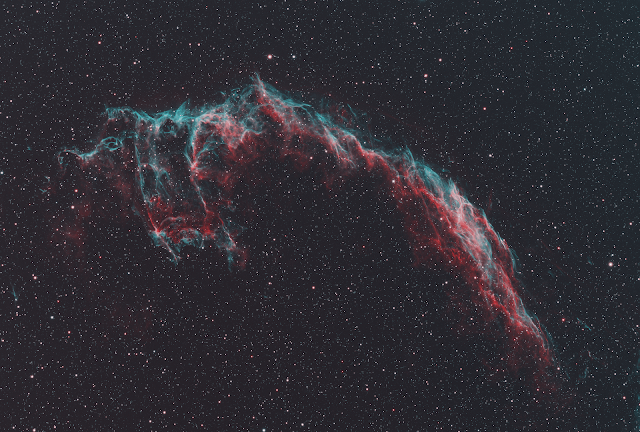The East Veil Nebula
 |
| Supernova remnant NGC-6692 - The East Veil Nebula. Taken under Michigan skies, July 2022 |
A Supernova Remnant
The East Veil Nebula is one portion of the much larger supernova remnant known as the Veil Nebula. As the name suggests, a supernova remnant are the remains of a star which has undergone runaway nuclear fusion resulting in a massively luminous explosion. The supernova event that created the Veil Nebula happened about 10,000-20,000 years ago.This image was taken using only two different narrowband filters: Hydrogen-alpha (Hα) and Oxygen-3 (Oiii). The red in the image comes from the Hα data while the Oiii is assigned equally to the green and blue color channels. Realistically, Hα is in the deeper end of the red spectrum while Oxygen-3 is more in between green and blue. The image may not be that far off from what the actual color appearance of the nebula looks like. Being able to record the object in different wavelengths makes it much easier observe specific structures the gasses are forming. Below is a closer look into some unique regions of the nebulous structure.
An Object in motion stays in motion
 |
| The Veil Nebula |
Full image available here: https://flic.kr/p/2nBmBBR


Comments
Post a Comment